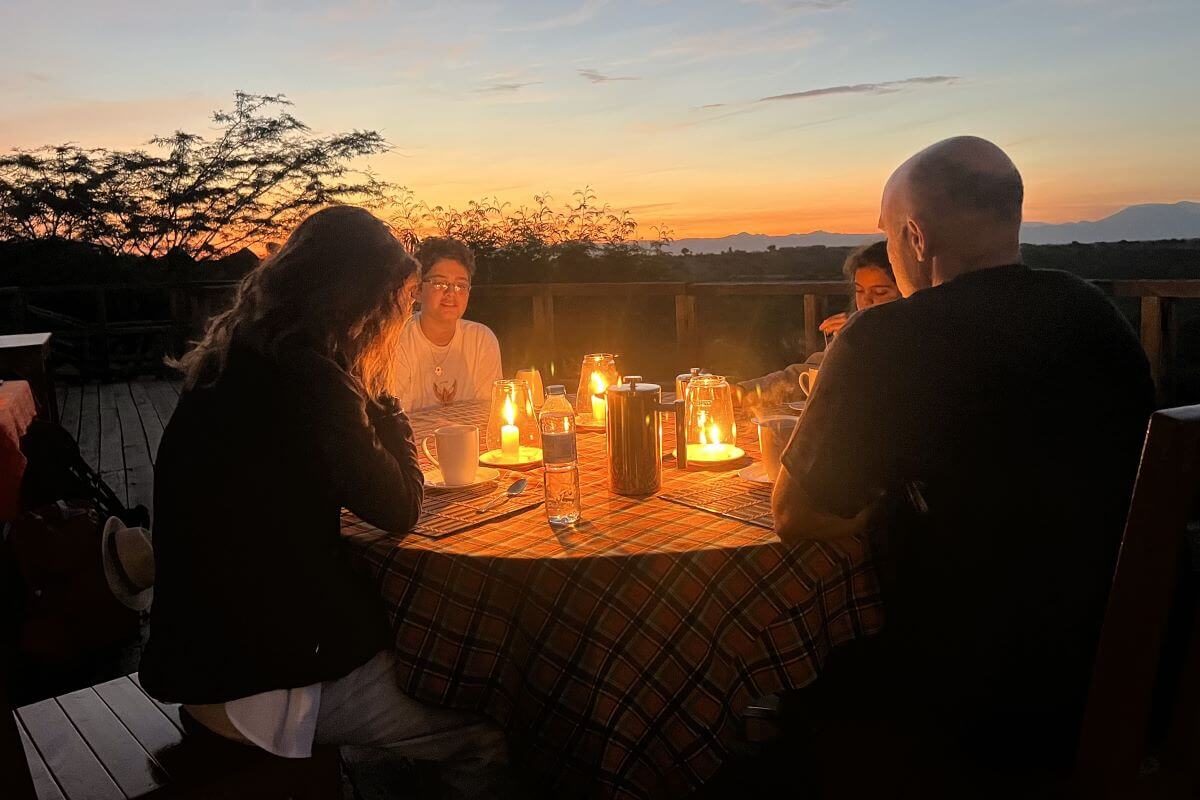Masai Mara National Reserve also known as the Mara, is named after the Masai people. The Masai are the area’s original inhabitants. The Masai Mara game reserve covers 580 square miles. This makes it one of Kenya‘s largest game reserves. Masai Mara National Reserve was established in 1961 as a wildlife sanctuary. The area was then expanded to the east and converted into a game reserve covering 703 square miles. The size was later reduced in 1984 to accommodate Masai who wanted to graze cattle on their ancestral lands.
The Masai Mara National Reserve is renowned for its lion, African leopard, cheetah, and African bush elephant populations. Hippopotamuses and crocodiles can be found in large numbers in the Mara and Talek rivers. The plains are also home to the distinctive Masai giraffe, the large roan antelope, and the nocturnal bat-eared fox.
The Masai Mara is also home to the Great Migration. Approximately 1,300,000 blue wildebeest, 500,000 Thomson’s gazelles, 97,000 topi, 18,000 common elands, and 200,000 Grant’s zebras are involved.
These animals migrate north from the Serengeti National Park in Tanzania into the Mara reserve. They migrate to find new pasture and return to the south in October. Herds of all three species are also resident in the reserve.
The park is home to over 470 different bird species. These include vultures, marabou storks, secretary birds, hornbills, crowned cranes, ostriches, long-crested eagles, African pygmy-falcons, and Kenya’s national bird, the lilac-breasted roller.
Masai Mara National Reserve shares the Mara-Serengeti ecosystem with Serengeti National Park in the south. The reserve is distinguished by wide valleys and escarpments. It has grasslands, Acacia woodlands, riverine forests, non-deciduous thickets, scrub, and seasonal rivers.

Game drives are usually undertaken from riverine woodlands to the great plains. It is the most popular tourist activity in Masai Mara.
Within the reserve, game tours are best in the early mornings and late afternoons. Game drives are ideal for guests who want to immerse themselves in the bush country and see larger animals. Night game drives are also available in private conservancies for guests interested in observing nocturnal animals.
Every year, a huge migration of wildebeest and zebra takes place. It involves over a million wildebeest and 200,000 zebras migrating north from the Serengeti plains. The animals’ primal instincts guide them to greener pastures. They follow the climatic rainfall patterns over the Serengeti-Maasai Mara ecosystem.
These animals create huge waves and splashes in the waters of the Mara and Talek rivers as they move in search of greener pastures.
From mid-July to late August is the best time to see the Great Migration in the Masai Mara. Their journey back to the Serengeti begins in late October. This is less spectacular and more like a slow dispersal.
The game reserve has a large variety of flora and fauna, but many small details can be missed on game drives. These may be insects crawling on delicate plants, small mammals emerging from their dens or birds nesting in trees. The majority of conservancies that border the Masai Mara National Reserve offers bush walks that provide an up-close and detailed look at the area.
A balloon safari, which provides a bird’s-eye view of the area, complements the walking safaris.
The hot air balloon allows you to see the Masai Mara while floating above the wilderness. One can see wildlife on the ground below as well as beautiful scenery.
Visiting a Masai community allows one to learn more about these noble people. Understanding their modesty and simplicity of life is a life-changing cultural experience.
The Masai are fierce warriors who are easily identified by their brightly colored traditional clothing. To keep their animals and wild animals out, their villages are surrounded by tree branches.
The Masai are nomadic herders of camels, cattle, sheep, and goats, so their diet consists primarily of animal milk, meat, and blood. These people perform a variety of exciting rituals and customs in which one can either observe or participate.
The best season to visit Masai Mara is during the lengthy cool-dry season from July to October. Animals are simpler to observe because the flora is less dense without rain.
Wildlife also gathers at the few remaining water sources particularly the Talek and Mara Rivers due to a lack of resources.
Masai Mara National Reserve has a variety of lodging options. They range from budget, Mid-range to luxury. There are also both privately owned and public campsites.
Lodges and hotels can be found in various parts of the Masai Mara National Reserve. Various conservancies also dominate the reserve.
Accommodation facilities within conservancies have a significant advantage in that guests can participate in activities that are not permitted within the main Masai Mara National Reserve. These include night game drives and walking safaris.
The most common mode of transportation between Nairobi and Masai Mara is by road. The distance varies between 225 and 275 kilometers depending on which Masai Mara gate you want to access.
There are several flights from Nairobi’s Wilson Airport to various airstrips in Masai Mara. A flight lasts about an hour.
